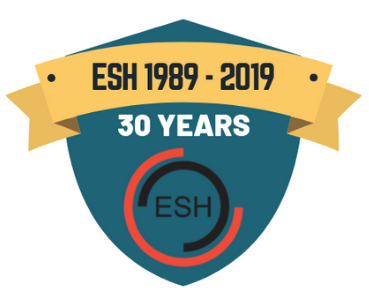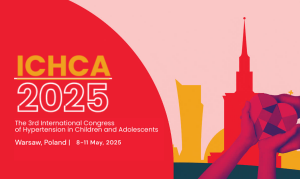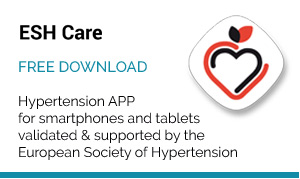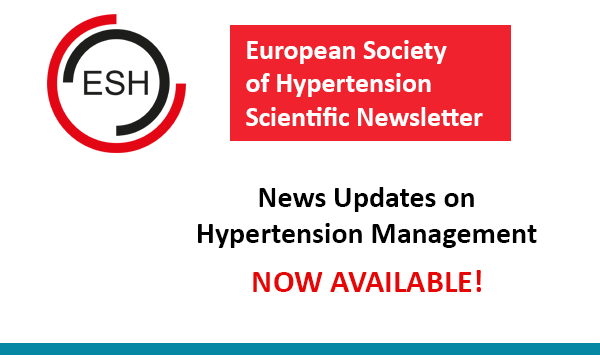Hypertension 2008
Recent studies showed a close relationship between microvascular damage in brain and kidney and either pulse pressure or arterial stiffness. In breaking the vicious circle between small and large artery damage not all substances are equally good, as say Prof. Stéphan Laurent, MD (Department of Pharmacology and Inserm U872, European Hospital Georges Pompidou, Paris, France), ESH president in the ESH Presidential Lecture.
Pulse wave velocity and central pressure
Arterial stiffness and wave reflections are now well accepted as the most important determinants of increasing systolic and pulse pressures in ageing societies. The noninvasive measurement of aortic stiffness, through carotidfemoral pulse wave velocity (PWV) has been recommended by the 2007 ESH/ESC Guidelines for the management of Hypertension, in order to evaluate the extent of arterial damage and adapt the intensity of antihypertensive treatment.
The measurement of PWV is generally accepted as the most simple, noninvasive, robust, and reproducible method with which to determine arterial stiffness. Carotid-femoral PWV is a direct measurement, and it corresponds to the widely accepted propagative model of the arterial system. PWV is usually measured using the “foot-to-foot” velocity method from various waveforms. The “foot” of the wave is defined at the end of diastole, when the steep rise of the wavefront begins. The transit time is the time of travel of the “foot” of the wave over a known distance. These are usually obtained transcutaneously at the right common carotid artery and the right femoral artery (i.e. “carotidfemoral” PWV), and the time delay (Δt, or transit time) measured between the feet of the two waveforms. PWV is calculated as PWV = D (meters)/Δt (seconds).
Measured along the aortic and aorto-iliac pathway, it is the most clinically relevant, since the aorta and its first branches are what the left ventricle ‘sees’, and are thus responsible for most of the pathophysiological effects of arterial stiffness. Carotid-femoral PWV has been used in most epidemiological studies demonstrating the predictive value of aortic stiffness for CV events.
The augmentation index
The arterial pressure waveform is a composite of the forward pressure wave created by ventricular contraction and a reflected wave. Waves are reflected from the periphery, mainly at branch points or sites of impedance mismatch. In elastic vessels of young subjects, because PWV is low, reflected wave tends to arrive back at the aortic root during diastole. In the case of stiff arteries in older subjects, PWV rises and the reflected wave arrives back at the central arteries earlier, adding to the forward wave, and augmenting systolic and pulse pressures. This phenomenon can be quantified through the augmentation index (AIx) – defined as the difference between the second and first systolic peaks (P2-P1) expressed as a percentage of the pulse pressure.
Central augmentation index and central pulse pressure have shown independent predictive values for all-cause mortality in patients with end-stage renal disease, and CV events in patients undergoing percutaneous coronary intervention and in the hypertensive patients of the CAFÉ study.
The damaging effect of local pulse pressure (PP) has been well demonstrated on large arteries, and to a lesser extent on small arteries. Elevated PP can stimulate hypertrophy, remodeling, or rarefaction in the microcirculation, leading to increased resistance to mean flow. Recent studies showed a close relationship between microvascular damage in brain and kidney and either pulse pressure or arterial stiffness. Indeed, significant and independent relationships have been demonstrated between carotid stiffness and glomerular filtration rate (GFR) in patients with mild to moderate chronic kidney disease, between brachial pulse pressure and GFR in elderly patients with never-treated isolated systolic hypertension, and between arterial stiffness and cognitive impairment in elderly subjects attending a geriatric outpatient clinic.
A vicious circle to be broken
A vicious circle between small and large artery damage can be exemplified by the following:
- increased wall-to-lumen ratio and rarefaction of small arteries are major factors for an increase in mean BP;
- the higher mean BP in turn increases large artery stiffness, through the loading of stiff components of the arterial wall at high BP levels;
- the increased large artery stiffness is a major determinant of the increased PP, which in turn damages small artery, as seen above, and favours the development of left ventricular hypertrophy, carotid intima-media thickening and plaque rupture.
These various types of target organ damage have been shown to be related with CV events. Antihypertensive treatment should break this vicious circle, to increase the possibilities of reversing target organ damage and reducing the risk of CV events. Not all pharmacological classes are equal in this respect. ACE inhibitors, angiotensin II receptor antagonists, diuretics and calcium channel blockers have been repeatedly shown to reduce arterial stiffness, central BP and augmentation index, and small artery damage. By contrast, nonvasodilating beta-blockers have opposite effects, i.e. they increase central BP and augmentation index and do not reduce small artery damage.
These pharmacodynamics data can be paralleled by large outcome clinical trials. In the LIFE and studies, losartan- and amlodipine-based treatments, respectively, proved to be more effective than atenololbased treatments for reducing CV events. Taken together, these data also suggest that therapy based on brachial artery recordings may overestimate the effect of betablocking drugs on central aortic systolic BP and underestimate the effectiveness of ACE inhibitors, angiotensin II receptor antagonists, diuretics and calcium channel blockers.
Related source: Laurent S. [Editorial commentaries] Aortic, carotid and femoral stiffness: how do they relate? Towards reference values. Journal of Hypertension 2008;26(7):1305-1306.






